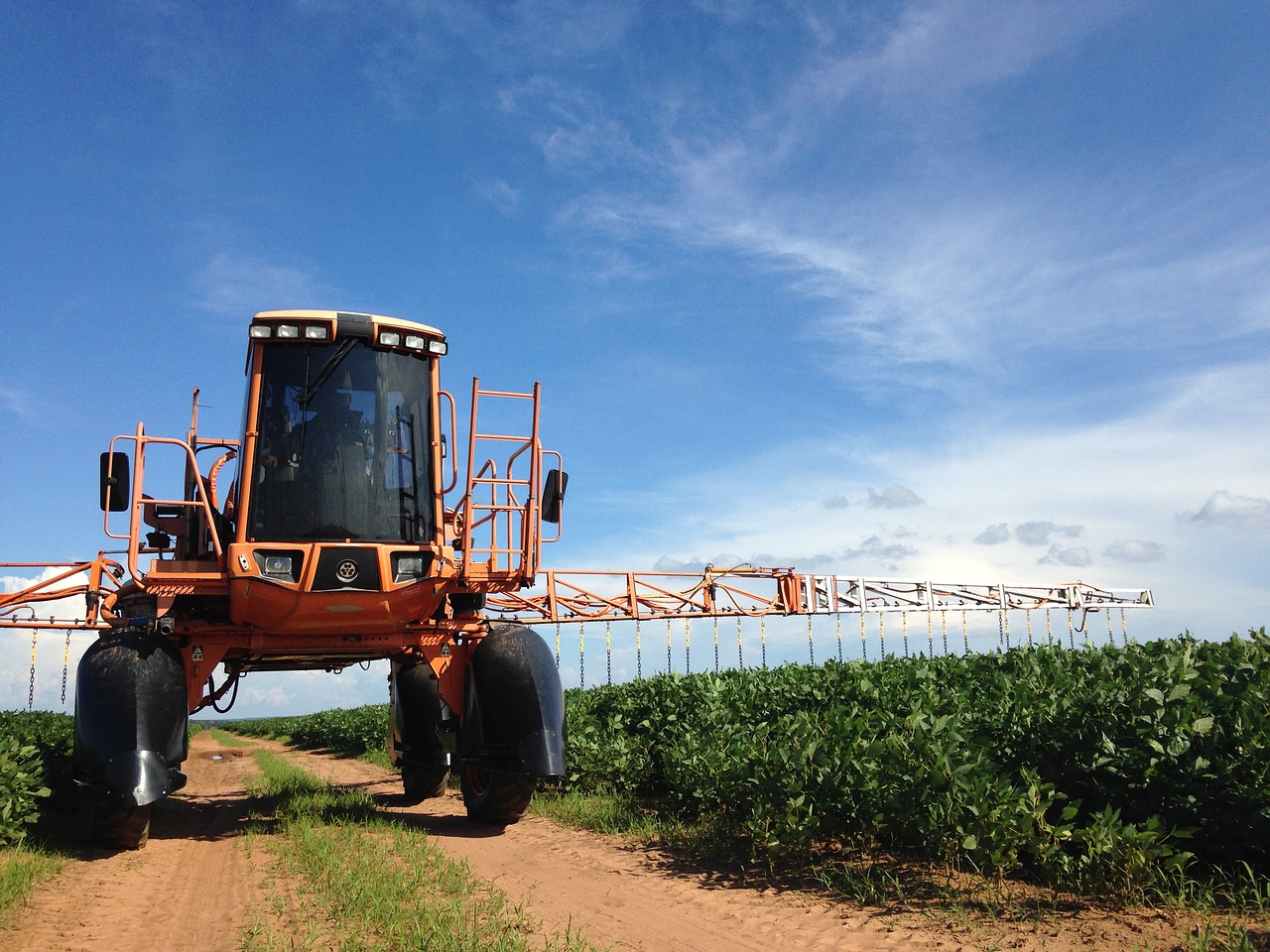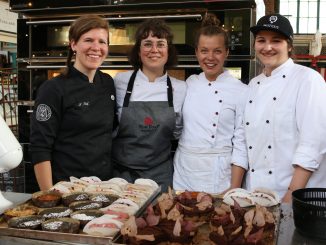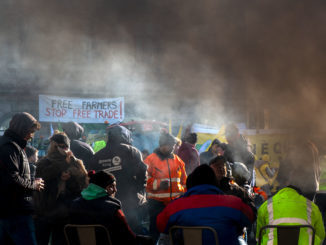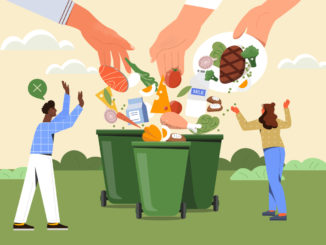
The European Commission and Member States need to pull up their socks on pesticides says the European Court of Auditors. More than 10 years since the directive on the sustainable use of pesticides, it still isn’t doing enough to measure and reduce the risks, finds a report released last week. Data compiled by member states doesn’t give a useful picture of pesticides (called in this report Plant Protection Products, or PPPs) application on the ground, and the much-touted harmonised risk indicators are not fit for purpose. While integrated pest management (IPM) is in theory mandatory for farmers, record keeping about it is not. Moreover, IPM won’t be taken seriously unless it’s pegged to CAP payouts, warn the auditors.
Louise Kelleher
The EU has had ten years to make progress on sustainable use of pesticides. But the 2009 directive got off to a sluggish start, finds a report published by the European Court of Auditors on February 5. It was a bumpy road to transposition in some member states, with a lack of follow through from the Commission, finds the report. The recommendations of the auditors call for action from the Commission in three key areas:
1) Enforcing application of Integrated Pest Management
2) Improving the data set on PPPs
3) Revising the Harmonised Risk Indicators.
Lack of incentives for farmers
Integrated pest management (IPM) is a cornerstone of the EU directive. PPPs should only be used as a last resort, the logic goes, since the use of integrated pest management is mandatory for farmers.
But this rule is poorly enforced, say the auditors. In part this is due to a lack of clear criteria for users on one hand, and for authorities to assess compliance on the other hand. Farmers are not required to keep records of IPM application. Meanwhile compliance is tricky to assess because of the complex range of factors involved, from crop, soil type and farm size to external factors such as weather conditions and the type of pest.
Member states are responsible for converting the principles of IPM into practical criteria for their farmers, and for assessing compliance. The auditors want to see the Commission enforcing IMP application by following up with member states.
The Commission now has a golden opportunity to peg these measurable IPM criteria to post-2020 CAP payments. These criteria should be incorporated into ‘conditionality’ in the post-2020 CAP, and the Commission should ensure they are enforced. The auditors recommend a timeframe of 2022 for enabling IPM enforcement.
Cross-compliance is as another area of opportunity for IPM enforcement. The auditors suggest taking inspiration from Switzerland, where farmers have to show “proof of ecological performance” to qualify for direct payments. The Swiss criteria are comparable to the IPM principles defined in the EU directive.
CAP could also be hardwired to support sustainable PPP use through compulsory farm advisory systems and by providing financial support.
While the auditors recommend using CAP as a stick, they also point out the clear lack of carrots for farmers. Alternatives to PPPs have been slow to materialize. Only a handful of lower risk products are available – despite a fast-track approval process that was introduced in 2016.
No clear picture of risks
With regard to monitoring the risks of PPP use, the EU needs more useful statistics. Aggregated data on PPP sales aren’t helpful because they can’t be compared with data on agricultural use of PPP. When revising the legislation, the Commission could get a clearer picture if it loosened the strict aggregation requirements for PPP statistics, recommend the auditors. It should also clarify and harmonise requirements for EU statistics on agricultural use of PPPs. The auditors suggest a timeframe of 2023 for improving access to statistics.
Environmental monitoring is a vital fail-safe against unacceptable effects or risks of PPPs. Water monitoring is well covered by the main the Water Framework Directive. But by comparison, the active substances to be monitored in soil are not defined in EU rules, warn the auditors.
Too little, too late
Harmonised Risk Indicators were touted as a powerful tool in the 2009 directive’s monitoring toolbox. But they came late to the party. Ten years after the directive was adopted, in June 2019 the Commission finally rolled out two Harmonised Risk Indicators. And neither indicator is adequate, find the auditors. Harmonised Risk Indicator I is based on sales per active substance, while Harmonised Risk Indicator II rests on the number of emergency authorisations granted by member states. Neither indicator is concerned with how, where and when these PPPs are used. The data just isn’t there. And so these indicators fail to demonstrate whether the EU is any closer to the goal of sustainable use of PPPs that the directive was meant to achieve.
If the Commission is to assess progress made towards policy objectives, it needs to improve the harmonised risk indicators, recommend the auditors. Alternatively it could develop new indicators: HRI I should take into account the way PPPs are used, while HRI II should incorporate agricultural areas or volumes of active substance.
Commitments
In its response published with the report, the Commission accepts most of the auditors’ recommendations. With regard to IPM, the Commission notes: “it is the responsibility of Member States to define on-farm obligations related to conditionality rules on the basis of the EU legislation, including IPM provisions.” Additionally it points to a 20% reduction between 2011 and 2017 for Harmonised Risk Indicator I (based on sales per active substance). It acknowledges the need for more complete data, from targeted monitoring or research studies. But its hands are tied as regards the timeframe for improving the harmonised risk indicators, as member states will have to provide the relevant data.
“The current CAP does not do little but on the contrary, helps enforce IPM at farm level,” objected the Commission in its response to the auditors. It noted that the future conditionality framework will incorporate the general principles of IPM that are “fit for conditionality.”
Increased level of ambition?
On the face of it the Commission is now taking the bull by the horns, evaluating the EU legislative framework governing the use of PPPs, and promising a high-profile clampdown on pesticides in the new Farm to Fork strategy. With the European Green Deal, the Commission has committed to “an increased level of ambition to reduce significantly the use and risk of chemical pesticides”.
The Farm to Fork draft action plan leaked by ARC2020 indicates that the Commission intends to revise the 2009 directive between now and 2022. Besides curbing the use and risk of PPPs, it hopes to stimulate the take-up of low-risk and non-chemical alternatives to pesticides. Another prong of the Farm to Fork strategy will be to ease market access for low-risk and biological active substances and products, according to the leaked document.
The next few months will indicate whether the EU is prepared to put pesticides through their paces. The full Farm to Fork Strategy is to be published this spring, with new legislative and other measures on reducing the use and risk of chemical pesticides expected to be rolled out next year. But with such disappointing progress in the decade that has passed since the 2009 directive, we’ll be watching the new Commission closely to follow through on its commitments on pesticides.
Read the report in full here Special Report – Sustainable use of plant protection products: limited progress in measuring and reducing risks
More on ARC2020
Pesticides under Pressure | EU Parliament and Progressive Places Putting Biodiversity First
Pesticides, Tear Gas and History | From WW1 to Today’s Streets
Damning Study on “Insect Armageddon” Shows Huge Biodiversity Decline
“Toward pesticidovigilance” Slams Lack of Global Pesticide Regulation





